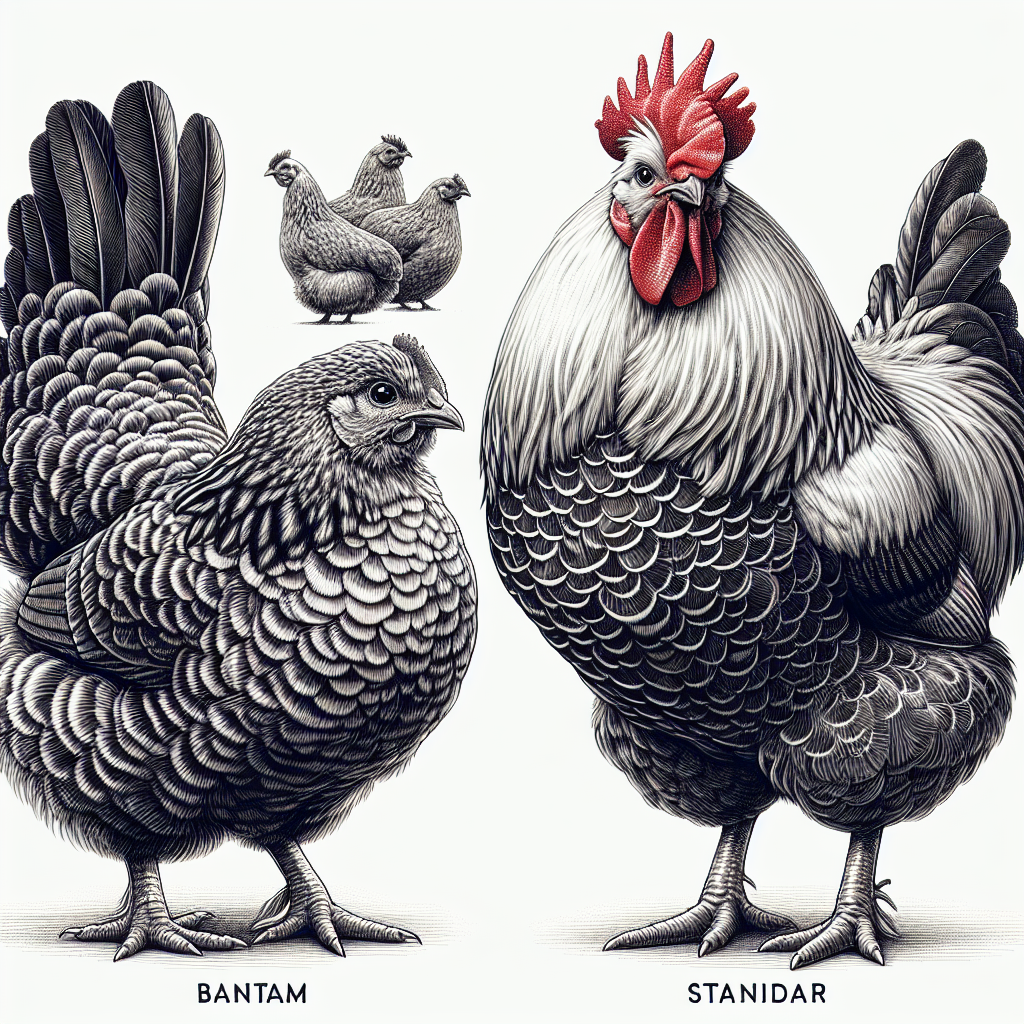Have you ever wondered how broodiness affects the way hens interact with each other? In this article, we will explore the fascinating world of hen behavior and delve into the intriguing effects of broodiness on their social interactions. We will uncover the ways in which broodiness alters their behavior within the flock and sheds light on the intricate dynamics of hen society. Join us as we unlock the secrets behind this natural phenomenon and gain a deeper understanding of these remarkable creatures.
Broodiness in Hens
Definition of Broodiness
Broodiness is a natural behavior exhibited by hens, where they become inclined to incubate eggs and care for their potential offspring. This behavioral shift typically occurs when a hen’s hormonal levels fluctuate, triggering a physiological and psychological change. During this period, the hen becomes less interested in socializing with other flock members and focuses primarily on nesting and nurturing behaviors.
Physical and Behavioral Changes during Broodiness
When a hen becomes broody, there are distinct physical and behavioral changes that can be observed. Physically, the hen’s body temperature increases, and she develops a more hunched posture to keep the eggs warm. She may also pluck feathers from her breast to provide direct skin contact with the eggs, aiding in temperature regulation. Behaviourally, the broody hen becomes less active, spending a majority of her time sitting in the nest, only leaving briefly to eat, drink, defecate, and stretch her legs. Her focus shifts entirely to incubating and protecting her eggs.
Social Interactions in Hens
Flock Dynamics
Hens are naturally social creatures that form social bonds within their flock. They engage in various activities together, such as foraging, dustbathing, and roosting. Flock dynamics play a crucial role in maintaining the overall well-being of the group. Flock members establish a hierarchical structure, where dominant hens have priority access to resources and exert control over subordinate individuals. The social interactions within the flock are essential for maintaining stability and cooperation.
Communication and Vocalizations
Communication plays a vital role in hen social interactions. Hens use a wide range of vocalizations to convey different messages to their flock members. These vocalizations can express aggression, submission, fear, contentment, or the location of food sources. By communicating with one another, hens establish and reinforce their social bonds, coordinate activities, and promote group cohesion.
Social Hierarchy
Within the flock, a social hierarchy naturally emerges. This hierarchy is based on factors such as body size, age, and assertiveness. Dominant hens occupy the highest rank, while subordinate hens have lower positions within the hierarchy. The hierarchy helps regulate access to resources, reduce conflict, and maintain peace within the flock. Hens establish their place within the social order through various means, including displays of dominance, aggressive interactions, and subtle body language cues.
Broodiness and Social Interactions in Hens
Decreased Participation in Flock Activities
When hens become broody, their participation in flock activities significantly decreases. They spend a large portion of their time in the nesting area, attending to their eggs. Broody hens no longer engage in activities such as foraging, dustbathing, or even socializing with other flock members. The decreased participation in flock activities can disrupt the usual dynamics of the group, as the broody hen isolates herself and focuses solely on incubation and egg-keeping.
Changes in Vocalizations
Broody hens also undergo changes in their vocalizations. They tend to be quieter and produce more gentle clucking sounds, serving as a means of communication within their nest. These vocalizations are often directed towards their eggs and potential offspring, providing a form of reassurance and contact. The change in vocalizations can be perceived as a withdrawal from the social dynamics of the flock, as the broody hen directs her communication efforts exclusively towards her nesting area.
Effects on Social Hierarchy
The emergence of broodiness can have significant effects on the social hierarchy within the flock. As the broody hen isolates herself and focuses on nesting behaviors, her position within the hierarchy may temporarily decrease. Other hens may take advantage of her absence from social activities and attempt to establish higher-ranking positions in the flock. However, once the broody hen’s broodiness subsides, she may reintegrate into the flock, leading to potential changes in the social hierarchy and power dynamics.
Psychological Factors
Nesting Behavior
The nesting behavior of broody hens is a crucial psychological factor that impacts their social interactions. Broody hens develop a strong desire to create a safe and comfortable environment for their eggs. They meticulously arrange nesting materials, such as straw or wood shavings, to form a cozy nest. This nesting behavior reflects their maternal instincts and the psychological drive to protect and care for their potential offspring.
Protective Nature
Broody hens exhibit an intensely protective nature when they are broody. They become highly territorial, fiercely defending their nest and eggs from any potential threats. This protective behavior, though admirable, can also contribute to aggression and conflicts with other flock members. The broody hen’s focus on safeguarding her nest may lead to increased tension and disruptions in the flock’s social interactions.
Desire for Offspring
One of the strongest psychological factors influencing broody hens’ social interactions is their deep-seated desire for offspring. The hormonal changes during broodiness trigger an instinctual drive to hatch and care for eggs. This profound desire to become a mother overrides their usual social tendencies, causing broody hens to prioritize incubation and nurturing over flock interactions. Their inner motivation to reproduce and raise young creates a temporary shift in their social dynamics.
Influence of Broodiness on Social Interactions
Isolation from the Flock
The broody hen’s focus on incubating her eggs often leads to her isolation from the rest of the flock. She spends a significant amount of time alone in the nesting area, only leaving briefly for essential activities. This isolation limits her interaction with other flock members and reduces her social involvement. The broody hen’s absence from regular flock activities can disrupt the group dynamics and the cooperative nature of the flock.
Parental Care
Despite the isolation from the flock, broody hens exhibit remarkable parental care towards their eggs. They diligently keep the eggs warm, turning them regularly to ensure uniform incubation. The broody hen may also emit soft clucking sounds to provide a soothing environment for the developing embryos. This parental care further intensifies the broody hen’s focus on her nesting area and strengthens her bond with her potential offspring.
Defensive Behavior
The protective nature of broody hens can manifest in defensive behavior towards other flock members. If an intruder, whether a hen or another animal, approaches the nesting area, the broody hen may aggressively defend her nest. She will not hesitate to peck, chase, or even fight if necessary, to ensure the safety of her eggs. This defensive behavior can create tension within the flock, potentially leading to aggression and altercations.
Broody Hens and Aggression
Increased Aggression towards Other Hens
Broody hens often exhibit heightened aggression towards other flock members when they are in their broody state. This increased aggression is primarily driven by their protective instincts and the need to safeguard their nest. Other hens that approach the nesting area may be perceived as threats, leading to territorial displays and physical confrontations. This aggression can disrupt the peace within the flock and cause temporary conflicts.
Protectiveness towards the Nest
The nest becomes the ultimate priority for broody hens, and they will fiercely protect it from any potential danger. The broody hen’s protectiveness towards the nest is evident through her defensive behaviors and vocalizations. She adopts a vigilant stance, constantly monitoring the surroundings for intruders. Additionally, the broody hen may emit warning calls or loud vocalizations to signal her willingness to defend her nest. This heightened protectiveness can create a hostile environment within the flock.
Broodiness and Communication
Alteration in Vocalizations
Broody hens undergo a noticeable alteration in their vocalizations. Instead of engaging in the usual repertoire of vocal exchanges with flock members, their vocalizations become more gentle, repetitive, and oriented towards their nests. This alteration may reflect their emotional state and heightened connection to their eggs. The broody hen’s altered vocalizations serve as a communication channel within her nesting area, allowing her to bond with her eggs and potentially influence their development.
Mother-Offspring Communication
Within the context of broodiness, communication between the broody hen and her potential offspring also takes place. The broody hen’s vocalizations and clucking sounds serve as a means of communication with the developing embryos. This communication aids in creating an emotional and physiological bond between the broody hen and her potential chicks. It is believed that the broody hen’s vocalizations and warmth contribute to the healthy development of the embryos.
Broodiness and Social Hierarchy
Changes in Ranking
The emergence of broodiness can lead to temporary changes in social ranking among flock members. As broody hens temporarily withdraw from social interactions and flock activities, their positions within the social hierarchy may be challenged by other hens. Hens that seize the opportunity to engage more actively within the flock may attempt to establish higher-ranking positions. Yet, once broodiness subsides and the broody hen reintegrates into the flock, the social hierarchy may readjust once again.
Challenges from Other Hens
Broody hens may face difficulties when reintegrating into the flock after the broodiness phase. Hens that have temporarily taken over higher-ranking positions in the social hierarchy may resist relinquishing their newfound status. This can lead to confrontations and aggressive displays as the broody hen navigates her return to the social dynamics of the flock. The challenges from other hens further highlight the impact of broodiness on the social interactions and power dynamics within the flock.
Reintegration of Broody Hens
Interaction with Flock Members
After the broodiness phase, broody hens gradually reintegrate into the flock’s social dynamics. This reintegration involves reestablishing social bonds, engaging in flock activities, and navigating the hierarchical structure. The broody hen’s return to regular flock interactions depends on factors such as acceptance by other flock members and adaptation to any changes that occurred during her absence. The interactions between the broody hen and other flock members shape the reintegration process and the establishment of a new social order.
Establishing New Social Order
During the reintegration of broody hens, a new social order may emerge within the flock. The changes in social dynamics resulting from the broody hen’s absence and subsequent return can lead to shifts in the hierarchical structure. Other hens that have temporarily assumed higher-ranking positions may retain their positions, challenging the previously established hierarchy. As the flock adjusts to these changes, a new social order may be established, with fluid power dynamics reflecting the intricate interactions between the broody hen and other flock members.
Conclusion
Broodiness has a significant impact on a hen’s social interactions. It causes physiological and behavioral changes, alters communication patterns, and affects the social hierarchy within the flock. The broody hen’s focus on nesting and incubation leads to decreased participation in flock activities, isolation from other hens, and increased protectiveness towards the nest. These changes often result in heightened aggression towards other flock members and potential challenges to the social hierarchy. However, once the broodiness subsides, the broody hen reintegrates into the flock, and a new social order is established. Understanding the influence of broodiness on hens’ social interactions provides valuable insights into the complex dynamics of these fascinating avian creatures.




